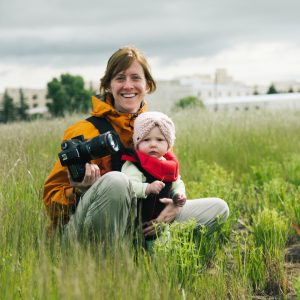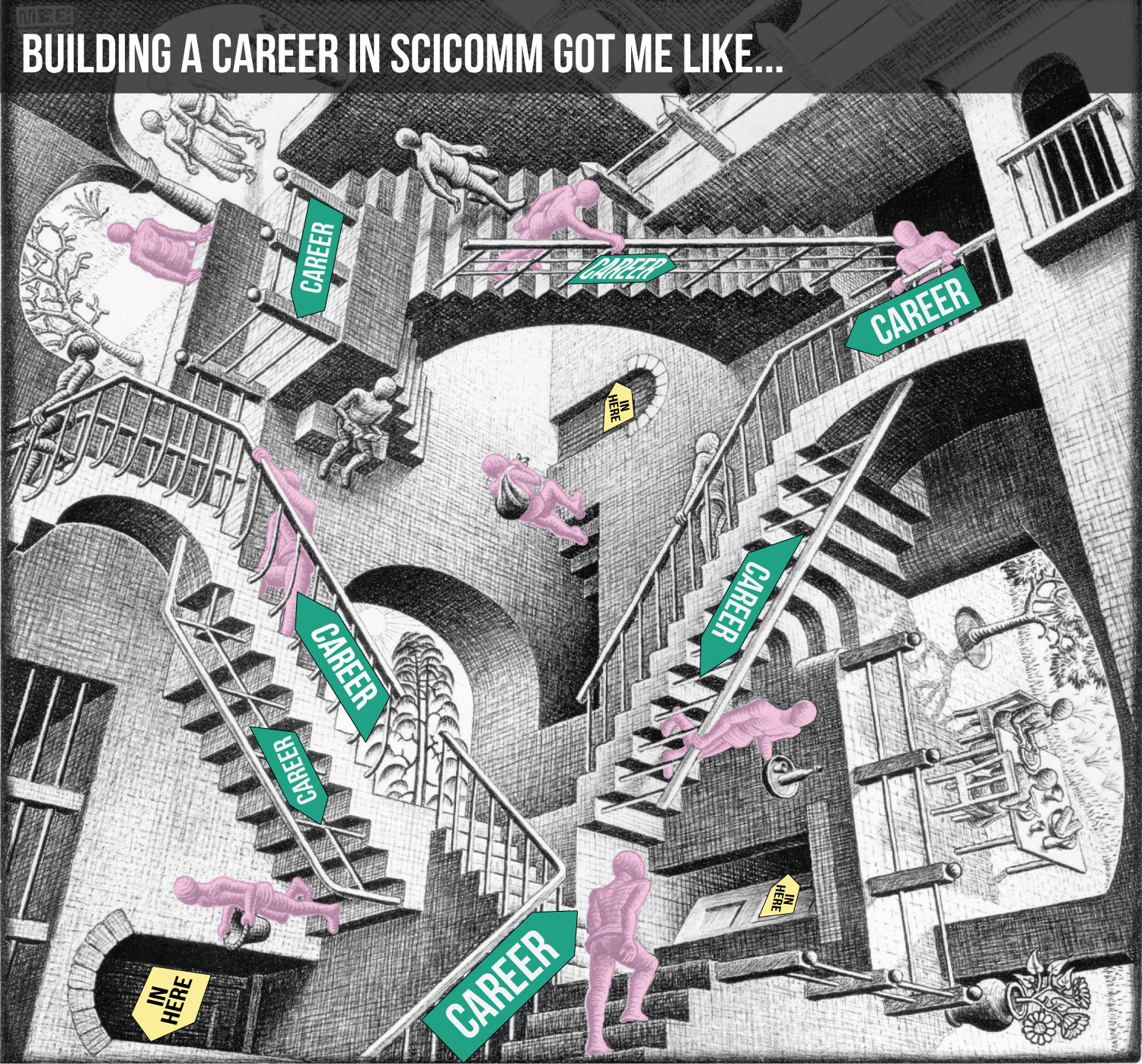#MySciComm: Kika Tuff on launching a scicomm company
Drawing inspiration from the #MySci hashtag, the ESA SciComm Section is launching a new blog series called #MySciComm.
Our aim is to explore the personal and professional journeys of science communicators, including the joys, struggles, and helpful resources that surfaced along their way.
We are also excited to showcase the wide range of types of SciComm that people can do, from photography and illustration to serving as an institutional press officer and public engagement research, and so much more. This is an emerging profession, and there are not only a lot of ways of doing SciComm, but a lot of ways of getting into it. Our #MySciComm series highlights some of the possibilities.
Contributors are asked to answer two questions: 1) how did you get into the kind of SciComm that you do, and 2) what are your top 1-3 SciComm tips and/or resources?
These questions are tailored to address two key interests of the ESA SciComm Section membership, specifically to A) provide an online clearinghouse for SciComm resources and to B) foster collaborations between ESA members and professional science communicators.
To launch the #MySciComm series, we posed these questions to the Chair of the ESA SciComm Section, Dr. Kika Tuff.

Kika Tuff and her daughter Mo, on assignment in vernal pools in California, during the making of the film Honey Bloom.
Kika recently completed her PhD from the University of Colorado at Boulder, where she focused on the thermal effects of forest fragmentation (Tuff et al. 2016). After graduating, Kika founded a science communication agency, Impact Media Lab, to help scientists share their story with the world.
————————-
Okay, Kika…
1) How did you get into the kind of SciComm that you do?
Probably like many folks reading this, I realized partway through my PhD program that I did not want to pursue a career in scientific research.
Don’t get me wrong, I LOVE science. I love the ideas, the methods, the community, all of it. But being a researcher just wasn’t for me.
Now science communication was not a term that I had heard before graduate school, but I had experience in photography and web design, and I found it easy to integrate my creative work into my scientific work. As graduate school wore on, I started offering departmental workshops on design-for-scientists, social media, building a website, and using everyday language to explain your science. Without really knowing it, I was carving out a niche for myself and building a portfolio in science communication.
When I started evaluating my career options, I noticed that science communication had a lot to offer.
I could pursue more creative work; I could do some good for the scientific community; and I could escape the pressures of an academic career while still engaging with primary research. However, as many readers probably know, a Google query of “jobs in science communication” yields very few results. I still have not seen a job description that captures what I’m hoping to do with my science communication career.
So I decided to start my own company.
In June 2016, I launched Impact Media Lab, a science communication agency specializing in grant writing, graphic and web design, and creative outreach. We are a young company, so my current focus is building our portfolio and gaining some visibility. So far, most of our clients have wanted help with grant writing—both consulting on the narrative and coming up with something powerful for the Broader Impacts section. We will also develop some websites this year, some printed design work, and a few short documentary films.
I am also giving a workshop at #ESA2017 on branding and marketing for scientists—“Branding is not a dirty word!”—which I am really excited about.
My vision for the company is grand—virtual reality apps, award-winning films, science road shows, and live events. I want a whole team of animators, illustrators, graphic designers, web developers, filmmakers, and photographers. All scientists-turned-communicators breaking the internet on a regular basis. But for now, I am really happy to learn the ropes of being a business owner and grow organically. With any luck, though, I will soon be populating Google’s query for “jobs in science communication.”
2) What are your top 3 SciComm tips and/or resources?
1. For resources, I rely heavily on social media:
Facebook—my best access to non-scientists.
Twitter—my best access to scientists and science communicators outside of my immediate network. I regularly set up Skype chats with people I respect on Twitter. It is a huge asset for professional networking and idea sharing.
2. As far as tips go, my advice is
Be brave.
There are few (if any) linear paths to jobs in science communication, so be prepared to face some unknowns and plenty of fear. But have faith that this is a growing industry, and your skills as a science communicator are incredibly valuable. Keep doing the work (designing, writing, creating). Follow the breadcrumbs as they come along; eventually they will lead to a career.
Be innovative.
SciComm is such a young industry, there are lots of ways to innovate and build a name for yourself. For instance, I have become really interested in merging principles from advertising with science communication to build more effective Broader Impacts activities. Just like with research, look for the gaps (there are so many!) and fill them with your talents and passion. You’re gonna be great.

Illustration ©2017 Kika Tuff, courtesy of Impact Media Lab.